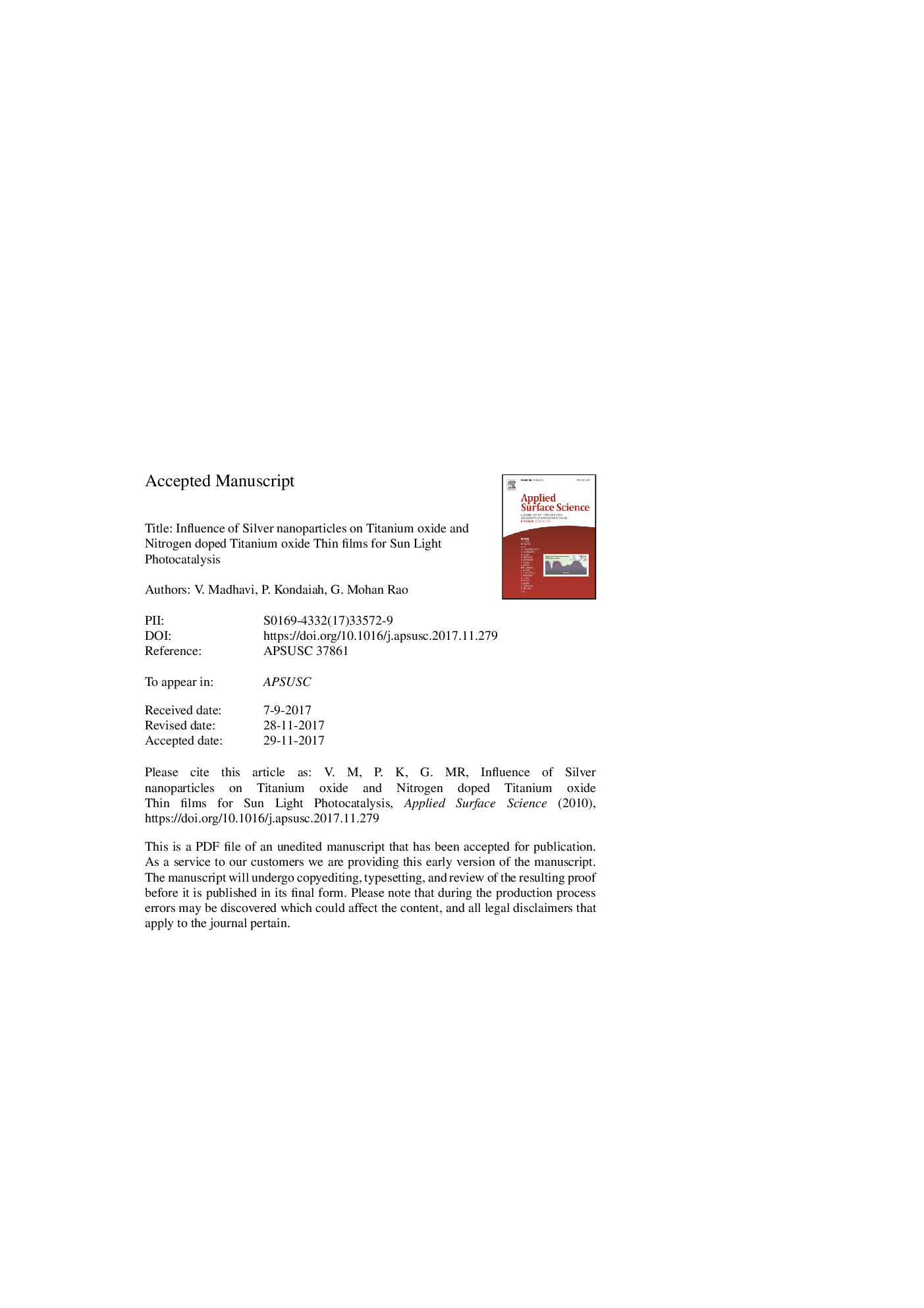| Article ID | Journal | Published Year | Pages | File Type |
|---|---|---|---|---|
| 7835975 | Applied Surface Science | 2018 | 43 Pages |
Abstract
Decreasing recombination of photogenerated charge carriers in photocatalysts is a critical issue for enhancing the efficiency of dye degradation. It is one of the greatest challenges to reduce the recombination of photo generated charge carriers in semiconductor. In this paper, we report that there is an enhancement of photocatalytic activity in presence of Sun light, by introducing Plasmon (silver nanoparticles (Ag)) onto the titanium oxide (TiO2) and nitrogen incorporated titanium oxide (N-TiO2) films. These silver nanoparticles facilitate the charge transport and separation of charge carriers. In this paper we find that the phase transformation accurse from rutile to anatase with increase of nitrogen flow rates. The FE-SEM analysis showed the micro structure changes to dense columnar growth with increase of nitrogen flow rates. XPS studies of the N-TiO2 thin films revealed that the substitution of N atoms within the O sites plays a crucial role in narrowing the band gap of the TiO2. This enables the absorption of visible light radiation and leads to operation of the film as a highly reactive and effective photocatalysis. The synergetic effect of silver nanoparticles on TiO2 and N-TiO2 films tailored the photocatalytic acitivity, charge transfer mechanism, and photocurrent studies. The silver nanoparticle loaded N-TiO2 films showed highest degradation of 95% compare to the N-TiO2 films. The photo degradation rate constant of Ag/N-TiO2 film was larger than the N-TiO2 films.
Related Topics
Physical Sciences and Engineering
Chemistry
Physical and Theoretical Chemistry
Authors
V. Madhavi, P. Kondaiah, G. Mohan Rao,
